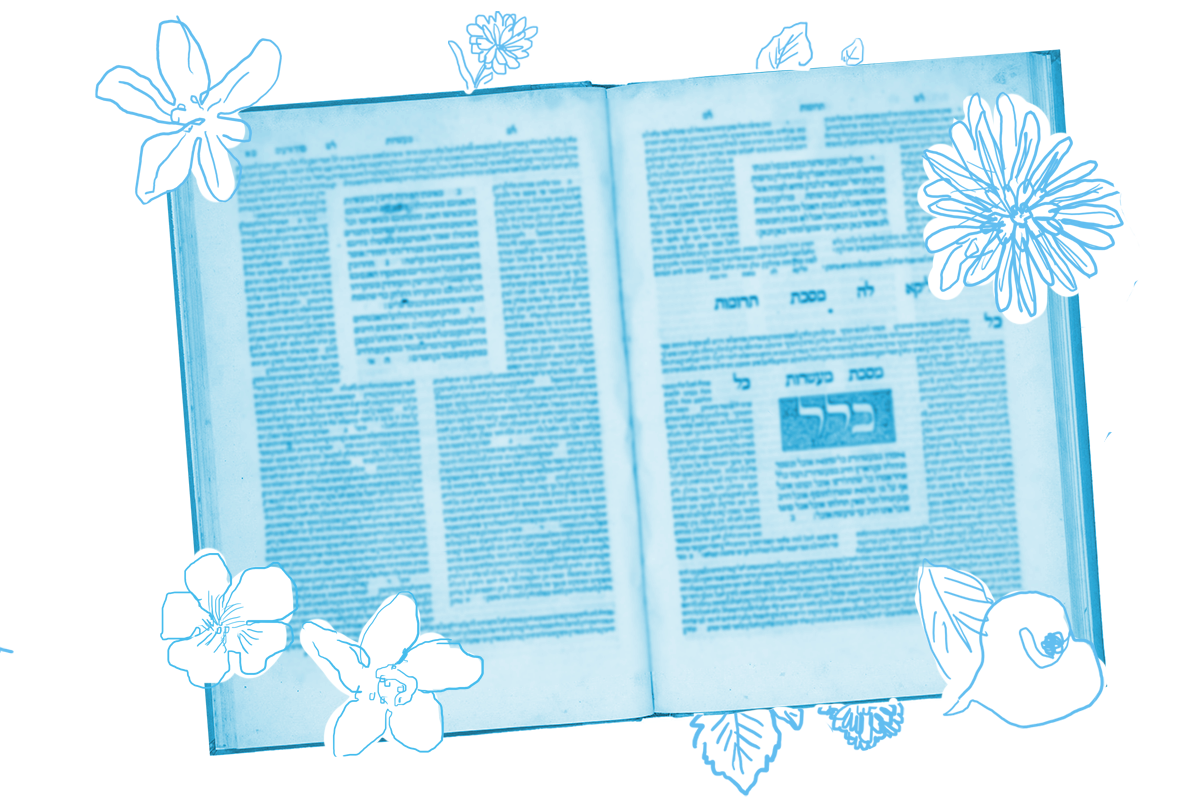Today’s daf introduces an important principle of rabbinic interpretation:
The written text of the Bible is authoritative.
Wait, what?! Isn’t that obvious from every midrash that we’ve seen in the Talmud so far? Of course the rabbis think the written word of the Tanach carries authority!
Actually, the principle is a little more complicated than it might appear. The rabbis encountered the Bible in several ways, only one of which would have been through looking at the text written down in a scroll. The rabbis also would have heard the text read aloud in synagogue (as Jews still do today), as well as heard and recited quotations from memory as part of their everyday study practices. The tricky thing about these different encounters with the Bible is that, even if they each referenced the same verse, they wouldn’t all be 100% identical to each other. That’s because sometimes the text of the Torah as it appears on a scroll, with no vowels or punctuation, seems to say one word, but the way the rabbis pronounced the word would actually be quite different.
With your help, My Jewish Learning can provide endless opportunities for learning, connection and discovery.
Here’s how this plays out on today’s daf, in the context of a dispute about how many walls a sukkah needs to be valid.
The rabbis taught: Two of the walls of a sukkah must be fully legal walls, and the third can be just one handbreadth long. But Rabbi Shimon says that three of the walls must be fully legal walls, and the fourth can be just one handbreadth.
About what do Rabbi Shimon and the rabbis disagree? The rabbis think that the written text of the Bible is authoritative. But Rabbi Shimon thinks that the pronunciation of the text of the Bible is authoritative.
The rabbis and Rabbi Shimon agree that the mitzvah of building and sitting in a sukkah derives from Leviticus 23:42-43, where a version of the word “sukkah” appears three times. They further agree that the first time this word appears, it is simply teaching the mitzvah of sitting in a sukkah at all. And they also agree that the word appears a second and third time in these verses to teach further details about how to build it — namely, how many walls it should have.
Here’s where things get complicated. One of the times the word appears, in Leviticus 23:43, it’s spelled in such a way that it’s clearly meant to be the plural of sukkah — sukkot. The other two times it appears, in Leviticus 23:42, it’s spelled differently (with no vav). By the written text alone, it appears like the singular version of the word — sukkat. But that spelling could also be vocalized like the plural, sukkot.
The rabbis, going by the spelling in the text, read the word as singular. That leaves them with one appearance of the word, in Leviticus 23:42, commanding the building of a sukkah. The two remaining appearances — one singular (also 23:42) and one plural (23:43) — tell us how to build it. Add up the singular and the plural and you get three — three walls.
But Rabbi Shimon reads the vav-free word in Leviticus 23:42 as plural, since that’s how the rabbis pronounced it, even though it’s not spelled that way. He adds up the two additional appearances of the word, both plural in his reading, and gets four — four walls.
So which side wins? In the end, the majority position, which only requires three walls, wins out over Rabbi Shimon’s stricter demand for four walls. And most interpreters of the Talmud wind up holding by a general principle that the writtentext of the Bible, as opposed to the pronunciationof the text, is authoritative in making these kinds of interpretations.
Read all of Sukkah 6 on Sefaria.
This piece originally appeared in a My Jewish Learning Daf Yomi email newsletter sent on July 13th, 2021. If you are interested in receiving the newsletter, sign up here.



